theme 00
Japanese castles are located in various places.
Nijo Castle in Kyoto and Osaka Castle in Osaka are famous sightseeing spots.
The castle is full of highlights, such as the remains of architecture from hundreds of years ago and the traditional Japanese architecture and gardens.
日本語テキスト -----------------------
Les châteaux japonais sont situés à divers endroits.
Le château de Nijo à Kyoto et le château d'Osaka à Osaka sont des sites touristiques célèbres.
Le château regorge de points forts, tels que les vestiges de l'architecture d'il y a des centaines d'années et l'architecture et les jardins japonais traditionnels.
theme 01

In the center of Tokyo,
there was Edo Castle of the Tokugawa shogunate/徳川幕府, which was proud of the 270-year samurai government,
but was destroyed by the fire/明暦の大火 in the mid-17th century.
It was just 200 years after Doukan Ohota/太田道灌 built the castle here.
He was said to be an excellent military commander and scholarly master,but was assassinated by a monarchy who feared disloyalty.
In the 17th century,
Edo Castle, which symbolized the authority of the three generations of Tokugawa who had the hegemony of the whole country,
became a peaceful era where there was no conflict, and economic revitalization policy was given priority, and the castle tower was never rebuilt.
In the 19th century, when the Samurai era ended, the site of Edo Castle turned into the Imperial Palace, and a part of it is now open to the public.
In the East Gardens/皇居東御苑, you may feel the ambition and quiet energy of the former monarchy at the ruins of the castle tower,
the center of city planning that makes full use of Fengshui/風水 and Way of Yin and Yang/陰陽道.
日本語テキスト -----------------------
Dans le centre de Tokyo, il y avait le château d'Edo du shogunat Tokugawa, qui était fier du gouvernement des samouraïs de 270 ans, mais a été détruit par un incendie au milieu du 17e siècle.
C'était juste 200 ans après que Doukan Ohota a construit le château ici.
On disait qu'il était un excellent commandant militaire et un maître savant, mais il a été assassiné par une monarchie qui craignait la déloyauté.
Au 17ème siècle, le château d'Edo, qui symbolisait l'autorité des trois générations de Tokugawa qui avaient l'hégémonie de tout le pays,
devint une ère pacifique où il n'y avait pas de conflit, et la politique de revitalisation économique était prioritaire, et la tour du château fut jamais reconstruit.
Au XIXe siècle, à la fin de l'ère des samouraïs, le site du château d'Edo s'est transformé en palais impérial, et une partie de celui-ci est maintenant ouverte au public.
Dans les jardins de l'Est, vous pouvez ressentir l'ambition et l'énergie tranquille de l'ancien monarque dans les ruines de la tour du château, le centre de l'urbanisme qui utilise pleinement le Fengshui et le Yin Yang.
Gates of Imperial Palace
There are 9 gates surrounding the Imperial Palace. They are the gates of the former Edo Castle.
Some of them have been changed from its original state.
However, they can be regarded as a valuable heritage of history.
Main Gate of the Imperial Palace / 皇居正門
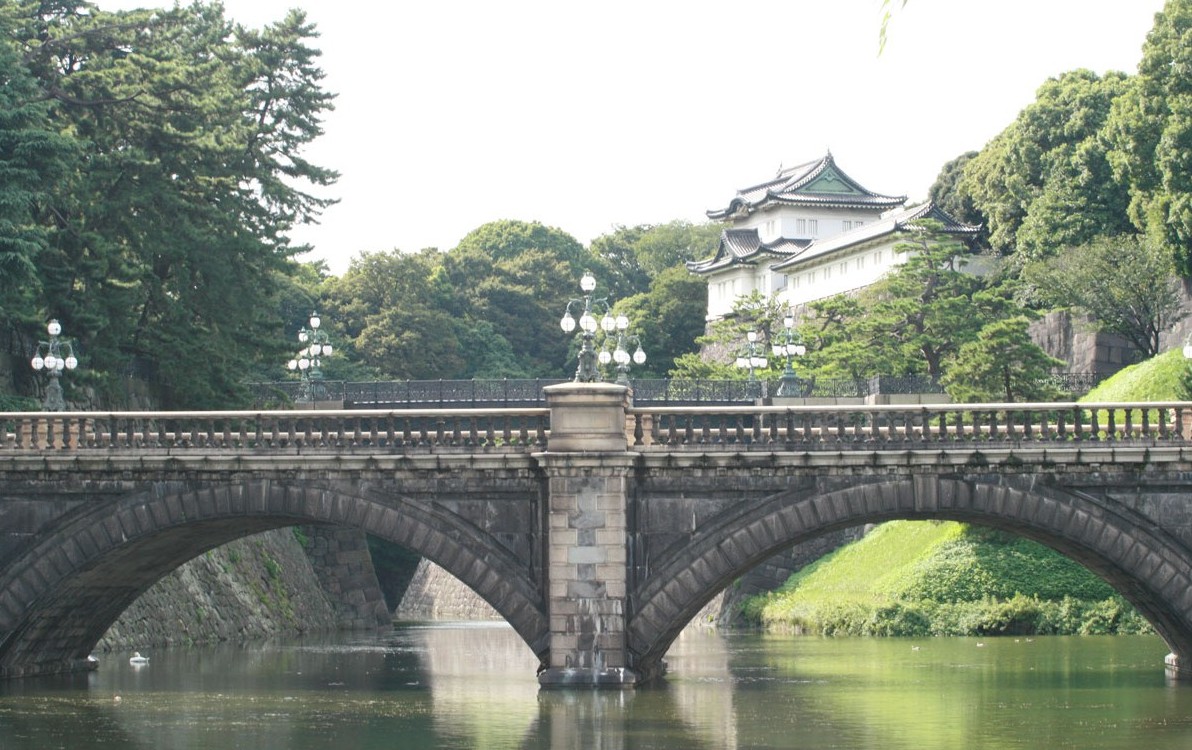
Nishi-no-Maru Ohte-mon Gate of the former Edo Castle.
After crossing the stone bridge and the iron bridge, two bridges are known as Double Bridge,
but originally this was a dual structured bridge, because of the entrance was in higher position in the Edo period,
the name of this bridge was based on this fact, the Imperial Palace appears in front of you.
Fushimi-yagura turret/伏見櫓, not the Edo castle, you can see a tower on the back screen, a two-layer, height is 13.4 meters, known as Moon Tower.
Kita-hanebashi-mon Gate / 北桔橋門
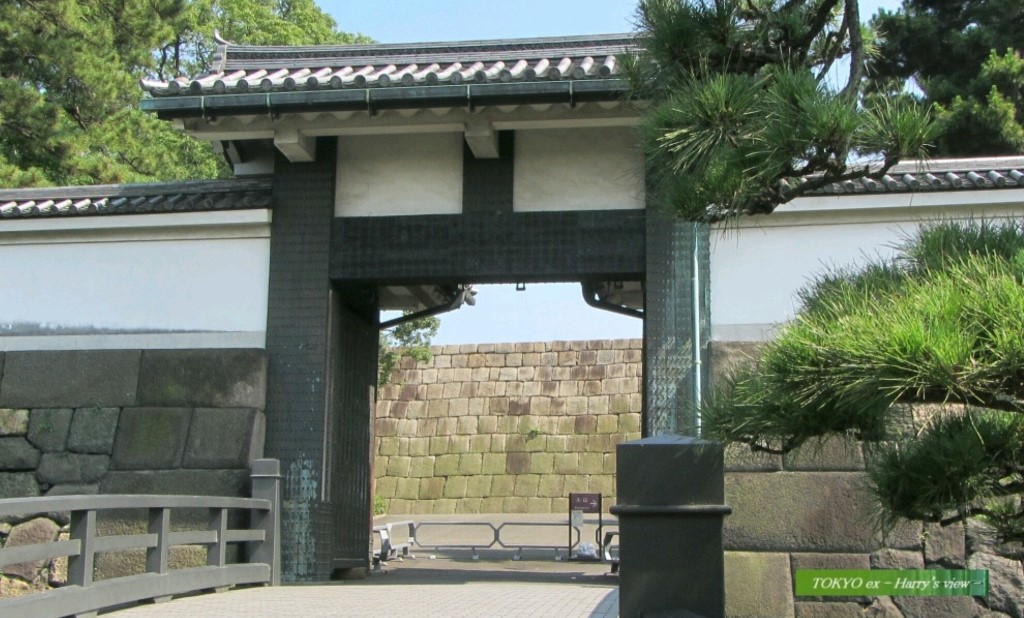
This gate was very important entrance leading to the main buildings in northern area directly, not far from Ohoku.
It was an solemn inner masugata style construction.
There is only a Korai-mon Gate/高麗門Gate now.
The stone wall is very strong and grand, and the moat is very deep.
In case of emergency, it blocked the way by raising the bridge girder against the enemies, likes the drawbridge of Magere in Holland.
The bridge was fixed in the Meiji period.
After passing through the gate, you can see the stonewall.
This is the Tenshudai Donjon Base/天守台, standing 58ms tall above the ground, 5 storied building outside,
it was the highest donjon ever built in Japan and symbolized the authority of the TOKUGAWA Shogunate.
But it was burnt down in the conflagration of 1657, only 19 years after completion, since then the donjon of the castle tower wasn't rebuilt and now only the stonewall remains.
East Gardens of Imperial Palace
In the east side of the Imperial Palace, the Edo Castle used to stand there, now, open to the public as the East Gardens of the Imperial Palace .
Otemon Gate / 大手門
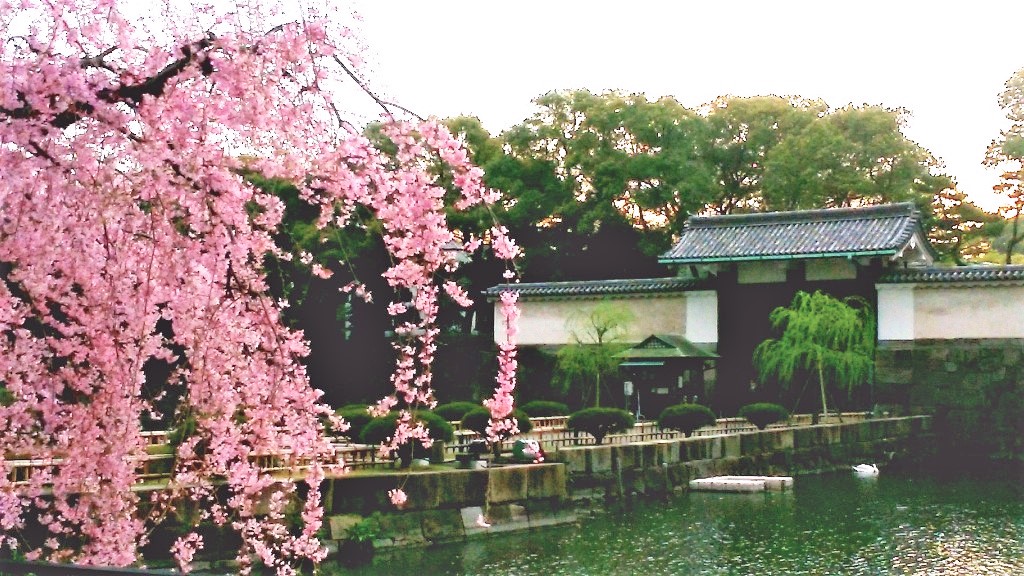
was one of the front gates of the former Edo Castle.
Visiting daimyos/大名, feudal lords, had to enter the castle
from this gate.
In front of the gate, Ote-mon-bashi Bridge/大手門橋used
to stand and was landfilled in 1918.
On the other side of the outer moat, the weeping cherry
trees, Shidare sakura/枝垂桜, are beautiful in spring.
After passing through the fast gate, Korai-mon Gate/高麗門,
you will find yourself in the closed square space surrounded
by some solemn stone walls and the second gate,
Watariyagura-mon Gate/渡櫓門, with roofed turret.
This is a strategically designed castle’s fortifications
structure, called Masugata style construction/枡形構造.
It is said that Masamune DATE/伊達政宗, a powerful
daimyo from the Tohoku region, voluntarily took part in
and built up to the Outer Masugata defense style during
the restoration of Edo Castle in 1620. He had been highly
respected from the third shogun Iemitsu TOKUGAWA.
In the early Edo period, it is said that Ote-mon Gate was
under Honmaru building, around the current Doshin Bansho/
同心番所, and was guarded by Koga-Ninja/甲賀忍者.
This gate repeated damage and repair due to disasters.
The present Ote-mon Gate was built in 1967.
Outer Garden of Imperial Palace
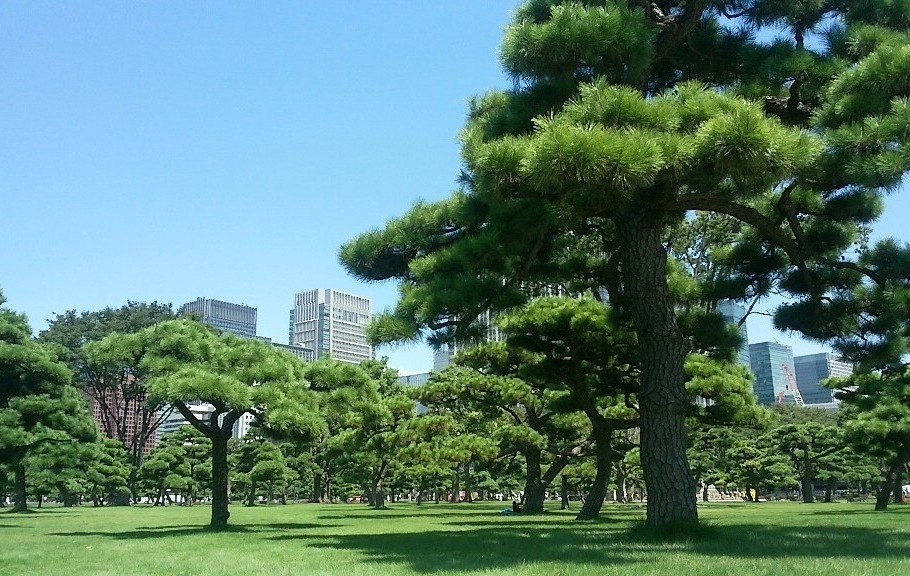
In front of the Imperial Palace,
the Outer Garden,
a lot of beautiful pine trees are planted.
楠正成, bronze statue, will be attached to your eyes.
He was one of the famous samurai warriors,
overthrew the 鎌倉 shogunate in the 14th century
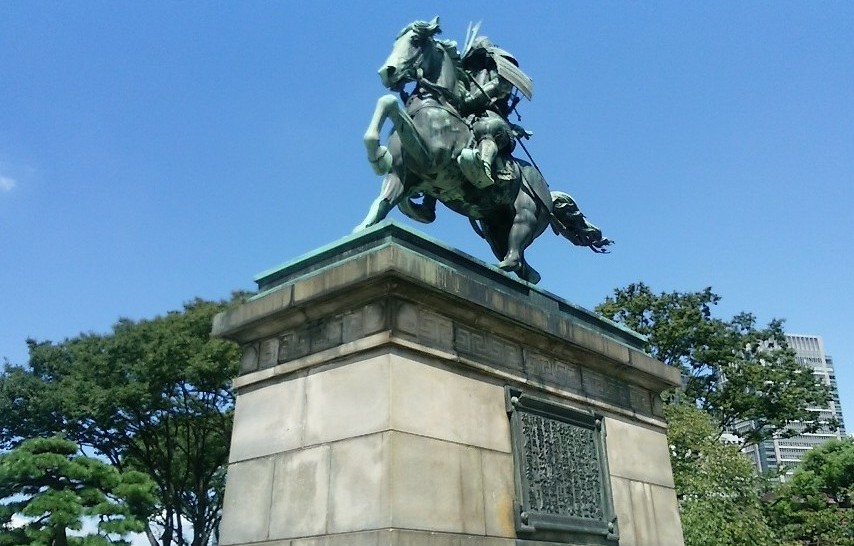 In the middle of Tokyo, in the Imperial Palace,
you can feel a good healing atmosphere.
Please, get your some priceless moment, silently.
In the middle of Tokyo, in the Imperial Palace,
you can feel a good healing atmosphere.
Please, get your some priceless moment, silently.
theme 05








